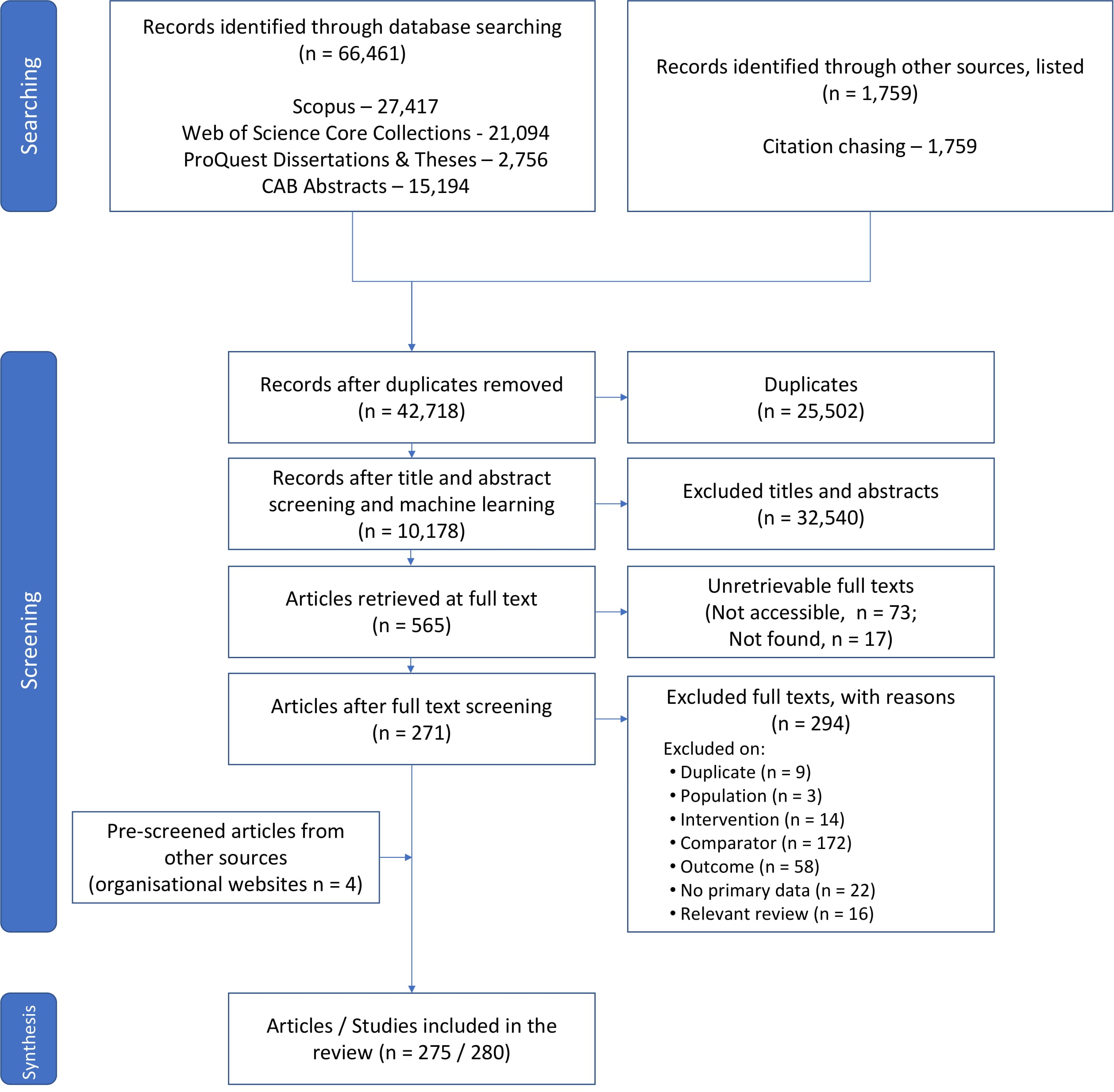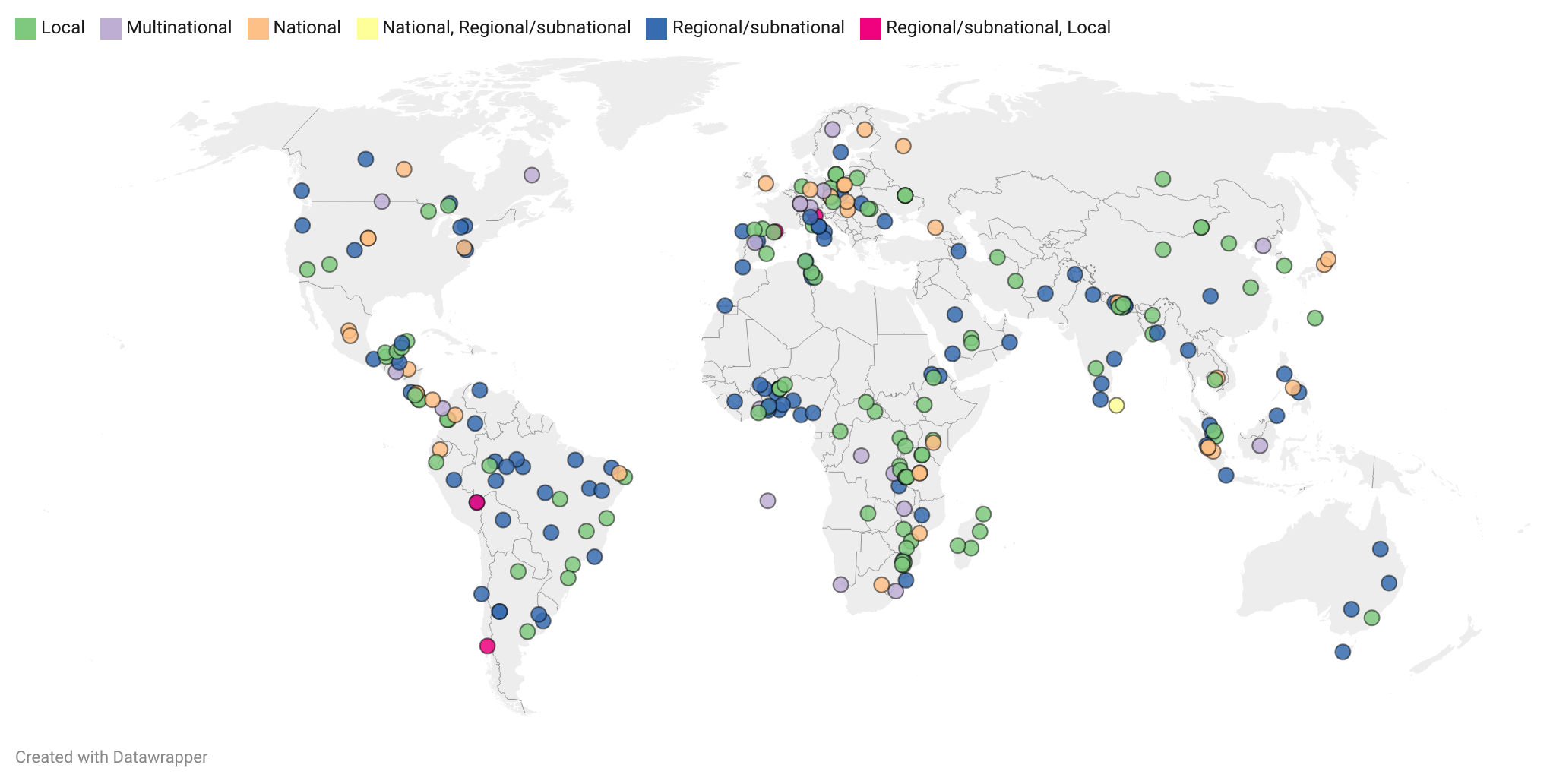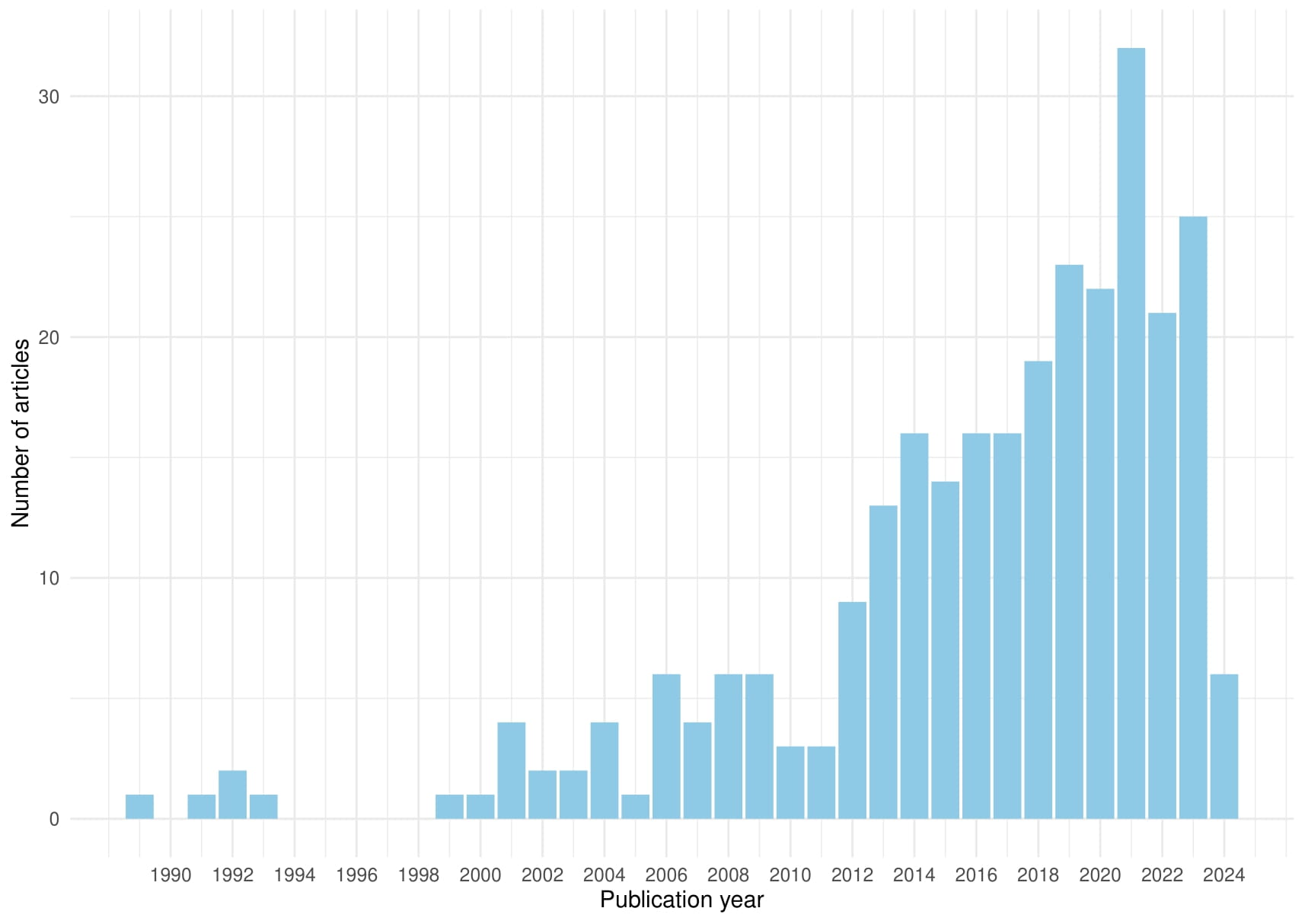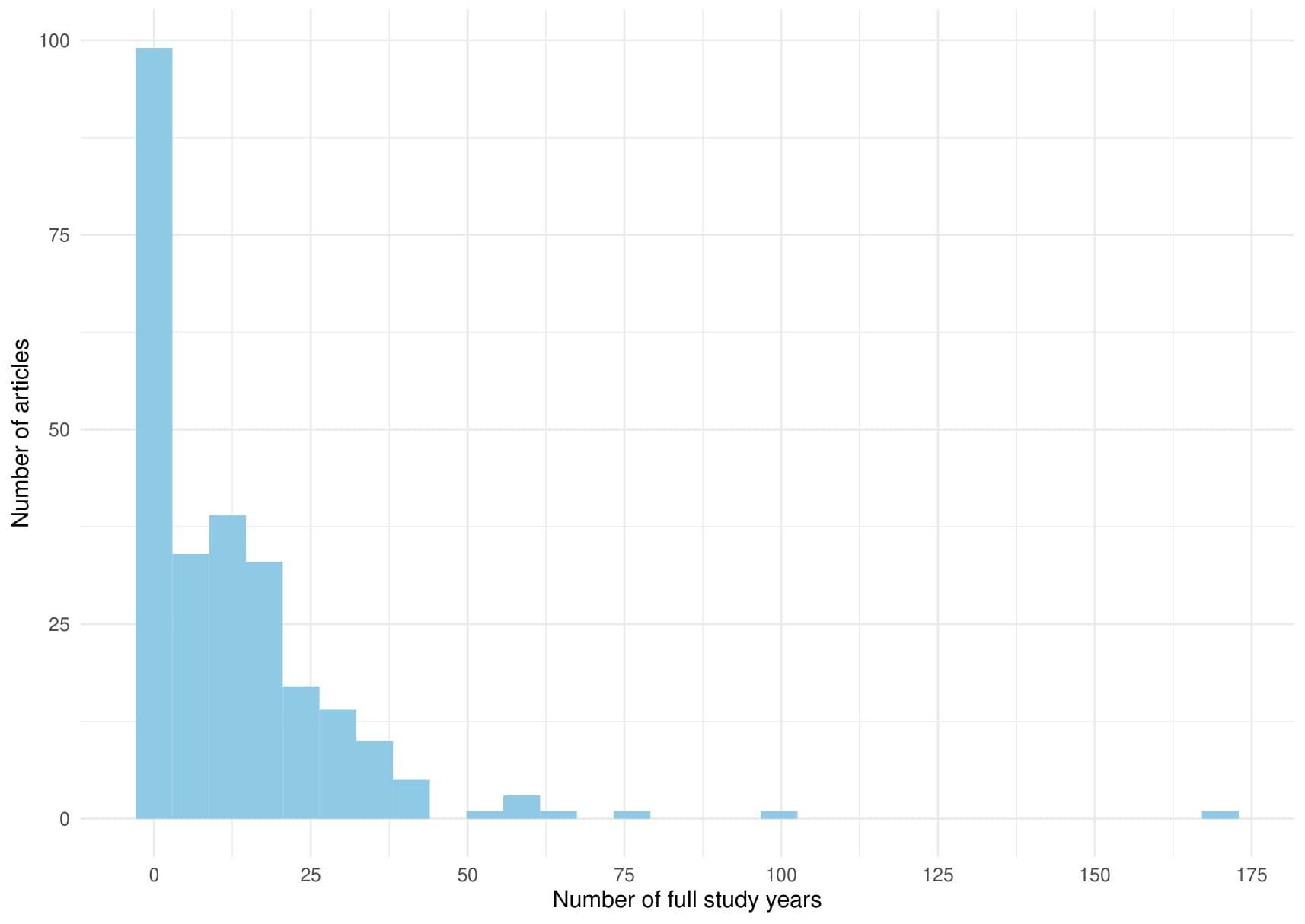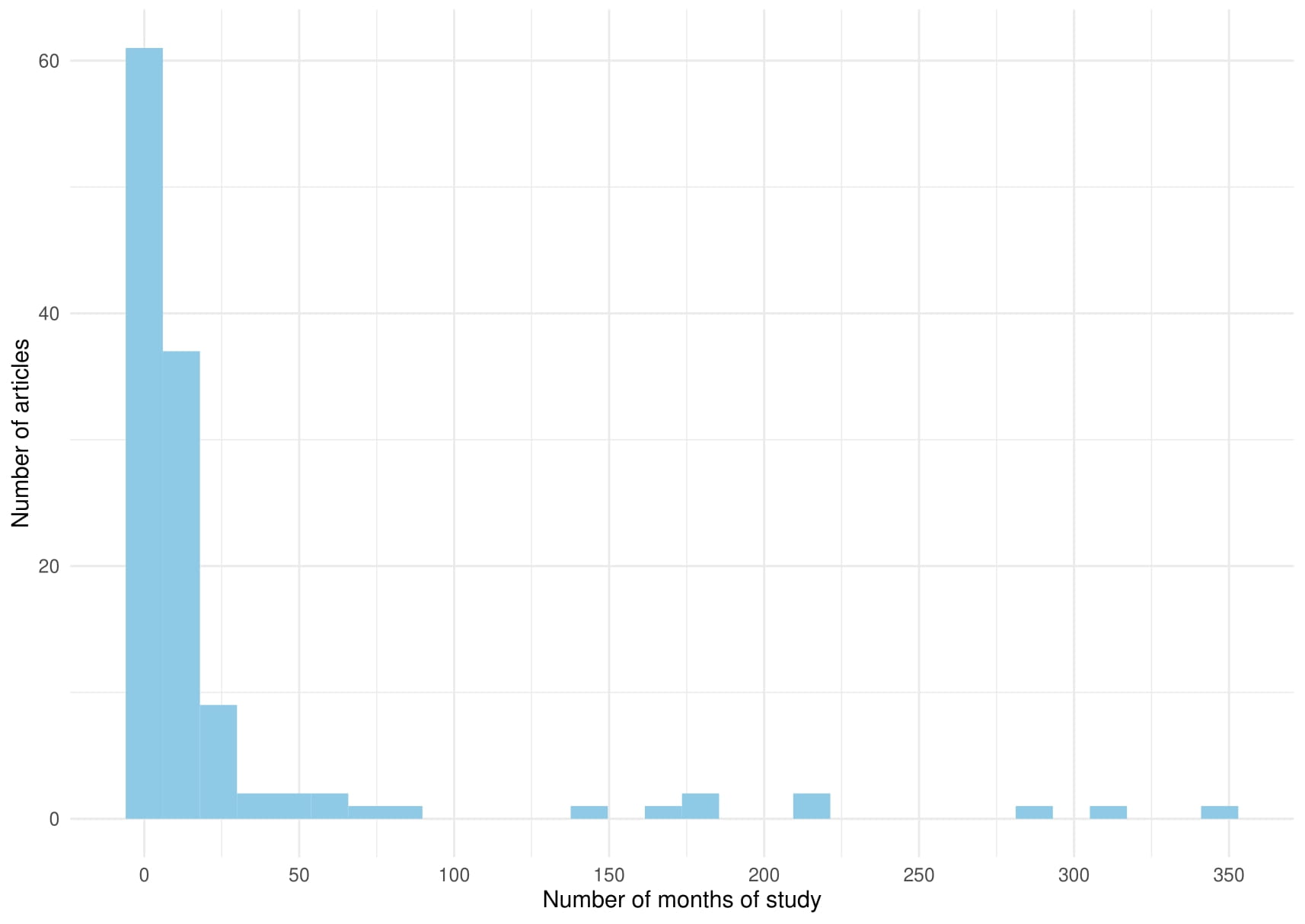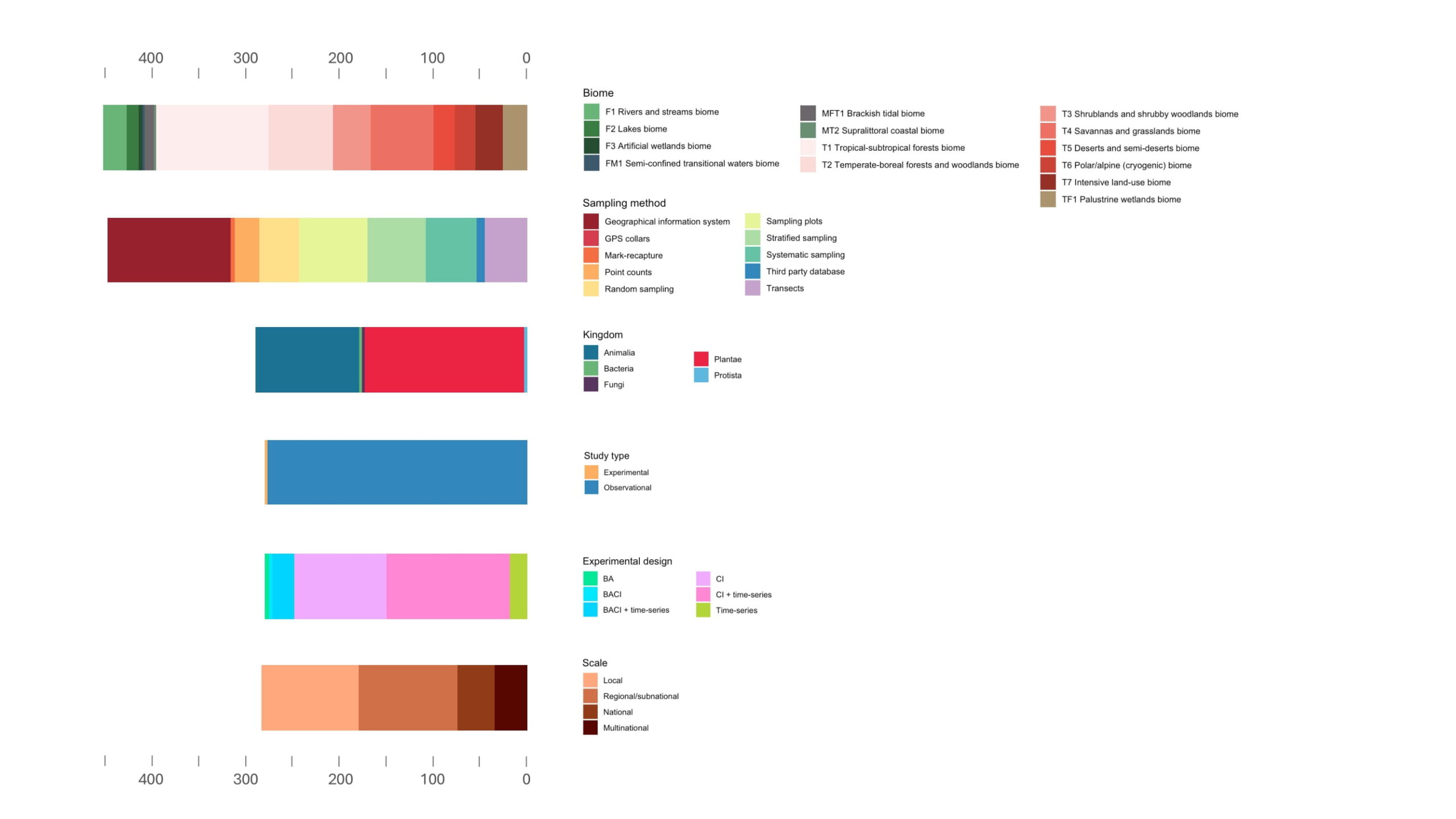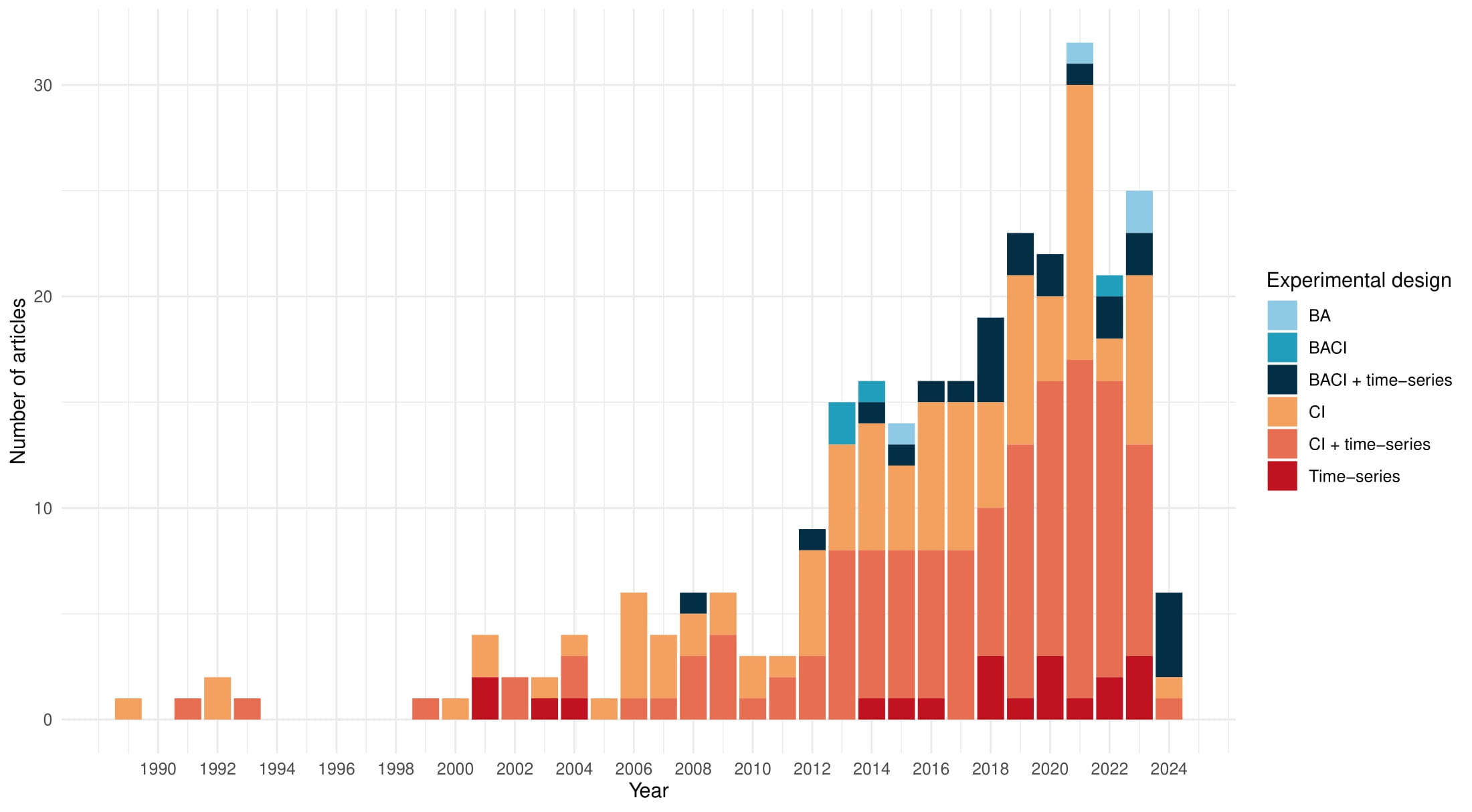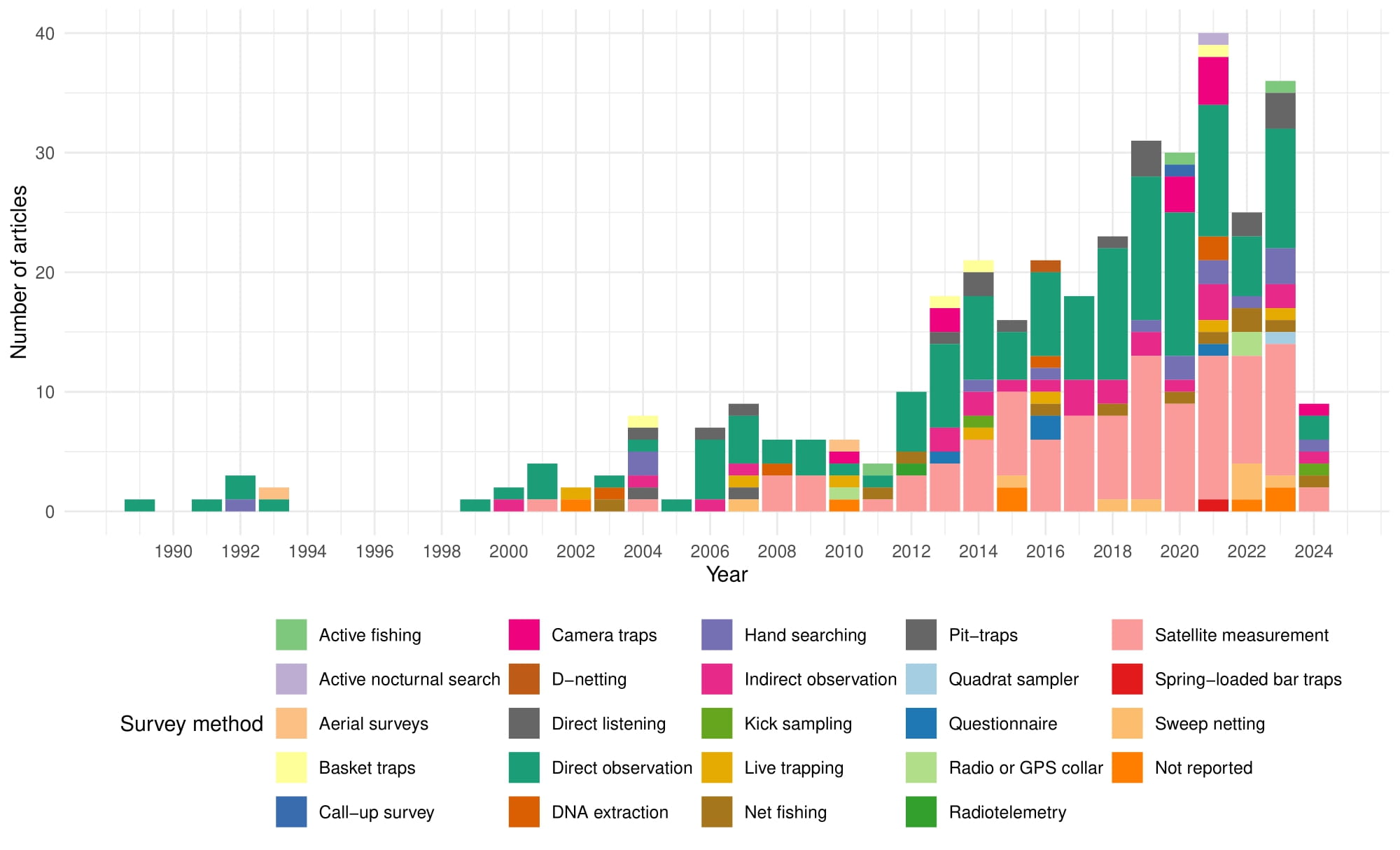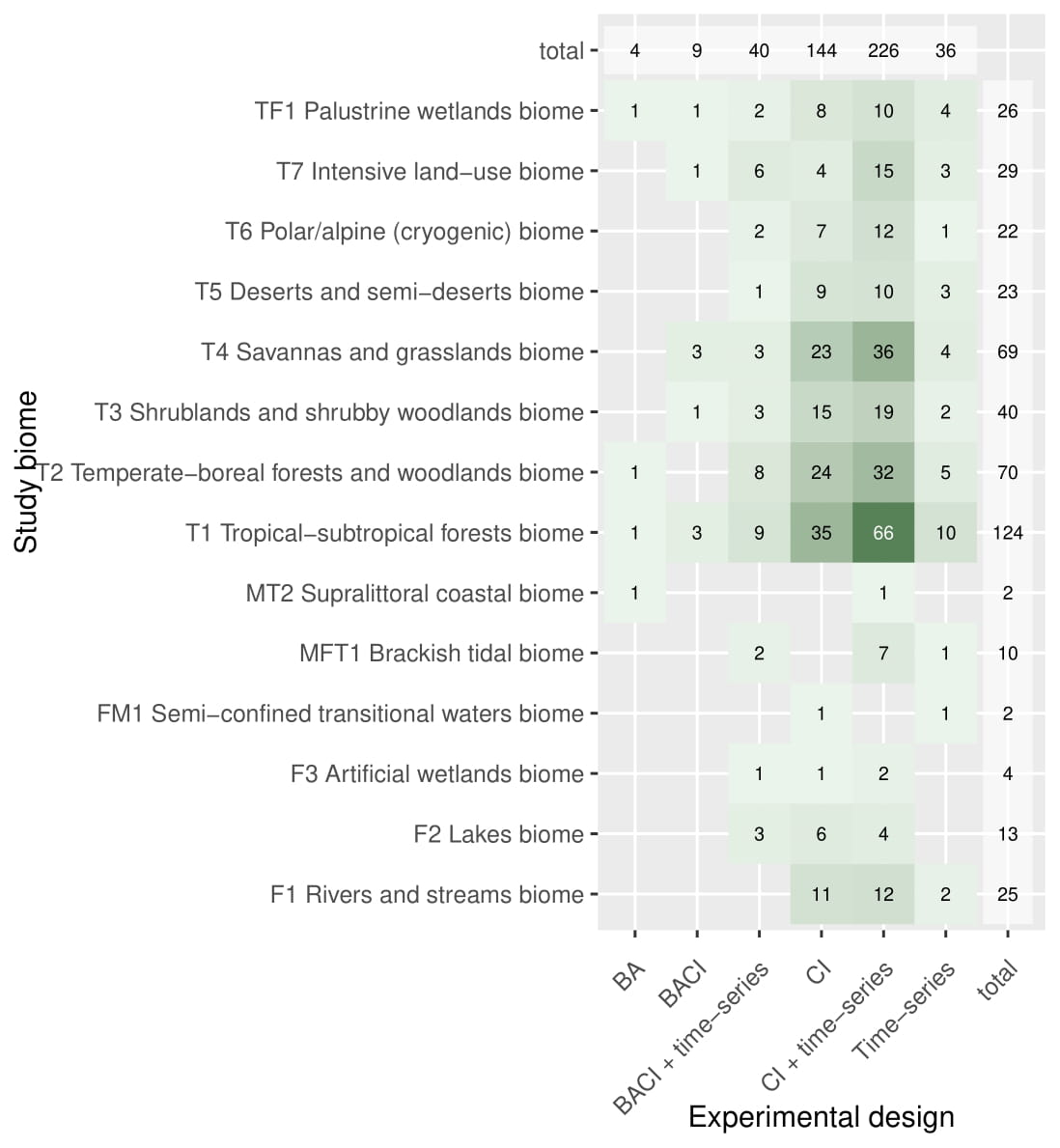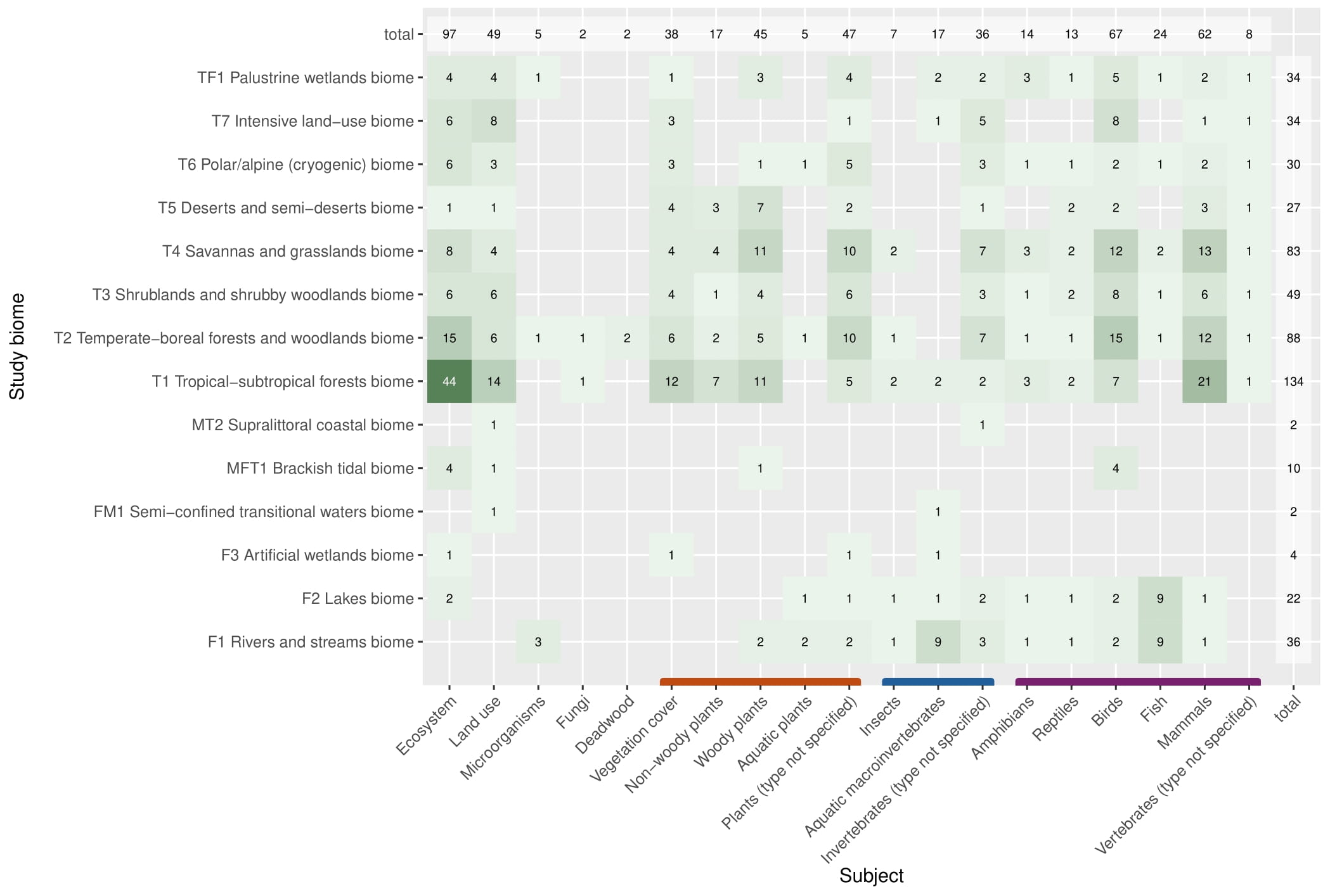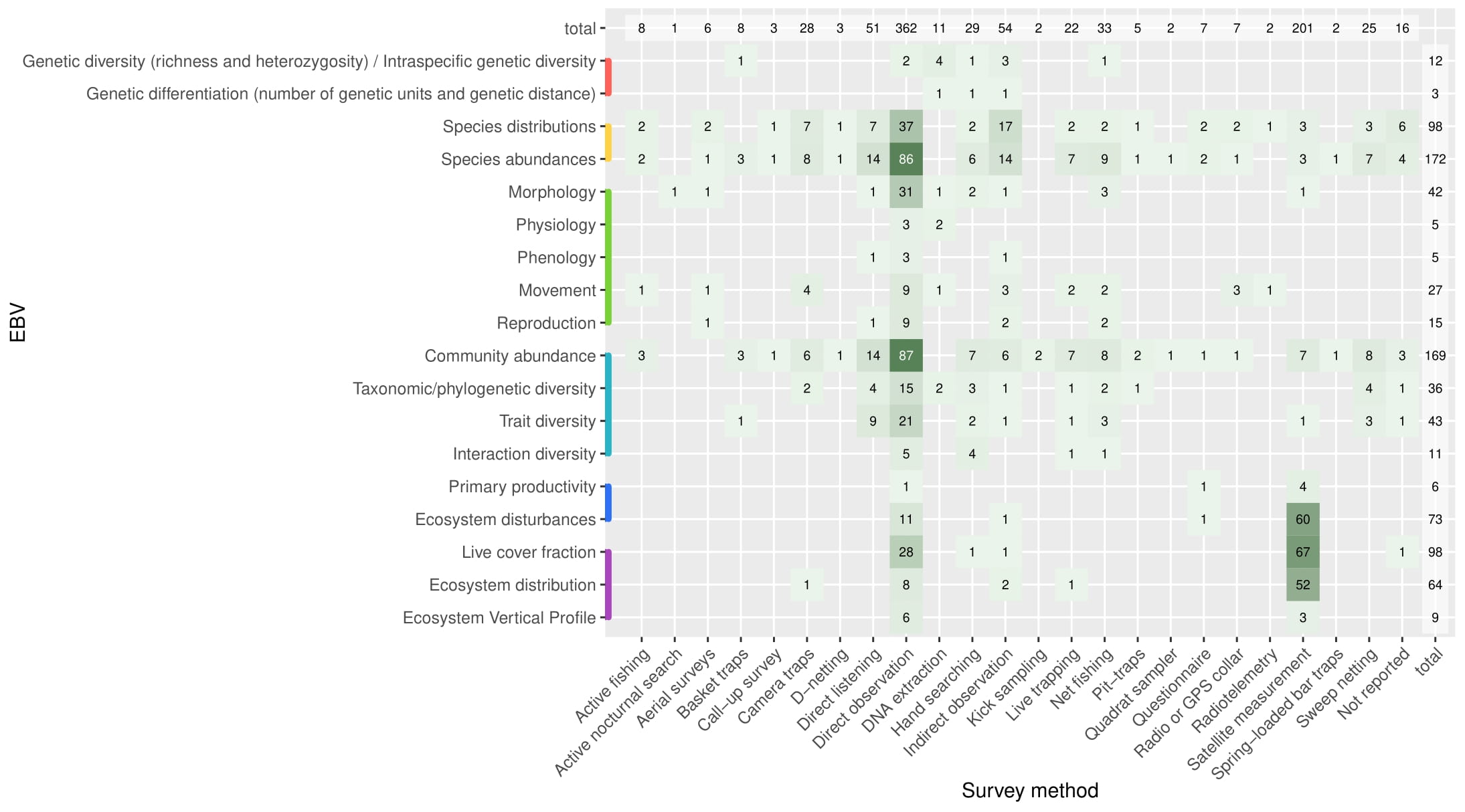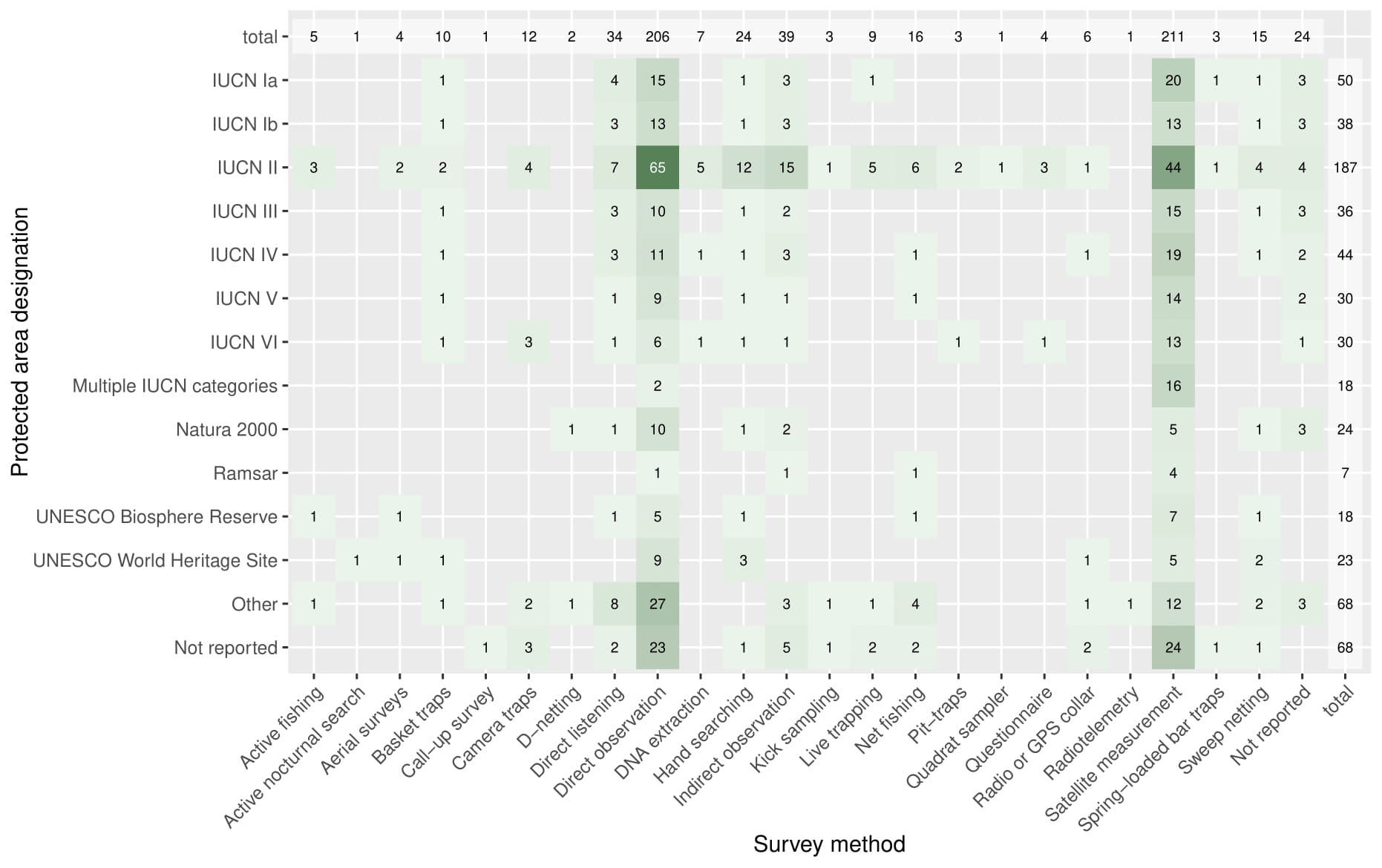Knowledge synthesis: “How is the effectiveness of terrestrial protected areas to conserve biodiversity measured? A systematic map”
Published: October 2025 | 10.5281/zenodo.17314935
Protected areas (PAs) are a cornerstone of biodiversity conservation. But how do we know whether they truly work? This systematic map compiles and analyses 275 articles and 280 studies (see the paper outlining the methodology) from around the world, presents a systematic map of global evidence on how terrestrial PAs are monitored and evaluated for biodiversity outcomes.
Understanding whether PAs achieve their intended biodiversity outcomes is essential for meeting international goals such as the Kunming-Montreal Global Biodiversity Framework and the EU’s biodiversity strategy for 2030. This systematic map can help researchers, policymakers, and conservation practitioners:
- Identify where evidence is strong or lacking,
- Prioritise future research and monitoring investments, and
- Design more robust, standardised evaluation systems for protected areas.
A growing research field with major imbalances
Research on protected area effectiveness has increased sharply since 2012, mirroring global policy commitments such as the Aichi Biodiversity Targets and the EU Biodiversity Strategy for 2030. Yet, this growth remains uneven:
- Geographic representation: Most studies were conducted in Africa, Asia, and Europe, with moderate representation from the Middle East, North Africa, South and Central America. In contrast, Oceania and North America were underrepresented, despite their extensive PA networks and strong research infrastructure.
- Scale of analysis: Most studies concentrate on single sites at the local or subregional level, offering valuable context-specific insights. However, they seldom address landscape-level connectivity or cumulative effects, which limits the generalisability of findings to broader spatial scales.
- Study duration: Most studies were short-term, with many lasting less than a year or even less than a month. A significant proportion extended up to 20 years, while studies spanning 45 to over 50 years were rare, limiting insights into long-term PA effectiveness.
How effectiveness is measured
The report highlights the range of methods used to assess biodiversity outcomes in PAs:
- Monitoring methods: The evidence base shows strong reliance on direct observation and satellite remote sensing, reflecting their accessibility and suitability for local and ecosystem-scale studies respectively. In contrast, field-intensive methods such as pitfall traps, active fishing, and kick sampling were rare, pointing to a gap in species-level monitoring, even though such techniques capture ecological processes that remote methods may miss.
- Metrics and data types: Studies mainly assessed biodiversity through land or forest cover change, serving as proxies for ecosystem condition. However, species traits and genetic composition metrics were much less represented due to the expertise and resources required, leaving fine-scale biodiversity processes underexplored in the global evidence base.
- Experimental designs: The majority of studies used Control-Intervention (CI) designs, often combined with time-series data, showing reliance on spatial comparisons to assess PA effectiveness. Before-After Control-Impact (BACI) designs were less frequent but increasing, offering stronger causal inference where baseline data and suitable control sites are available. Their limited use highlights a need for better-integrated, long-term monitoring and planning to improve causal understanding of conservation outcomes.
What is being studied
- Biome coverage: The evidence base is dominated by tropical-subtropical and temperate-boreal forests, reflecting global conservation priorities. Alpine regions, deserts, wetlands, and other biomes remain underrepresented, leaving important gaps in understanding PA effectiveness across diverse ecosystems.
- Essential Biodiversity Variables (EBVs): Most studies focus on ecosystem- and population-level EBVs (e.g. species abundance, community composition, vegetation cover), while genetic and functional metrics remain underrepresented, signalling a need for more comprehensive, fine-scale indicators of biodiversity change.
- IUCN categories and effectiveness: According to the IUCN framework, protected areas (PAs) range from those prioritising strict biodiversity protection (Categories Ia-II) to those integrating conservation and sustainable use (Categories V-VI). The evidence base shows that while multi-use PAs are expanding, their effectiveness remains poorly understood compared to older, strictly protected sites.
Select a variable to group the studies by (X-Axis) and use the filters below to refine the data.
